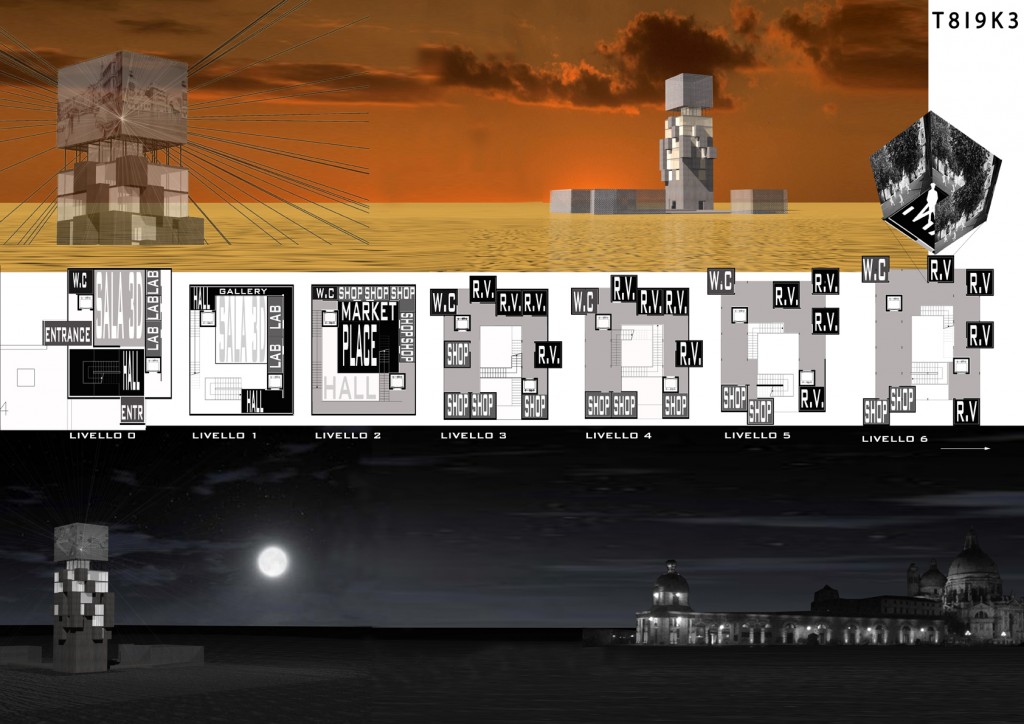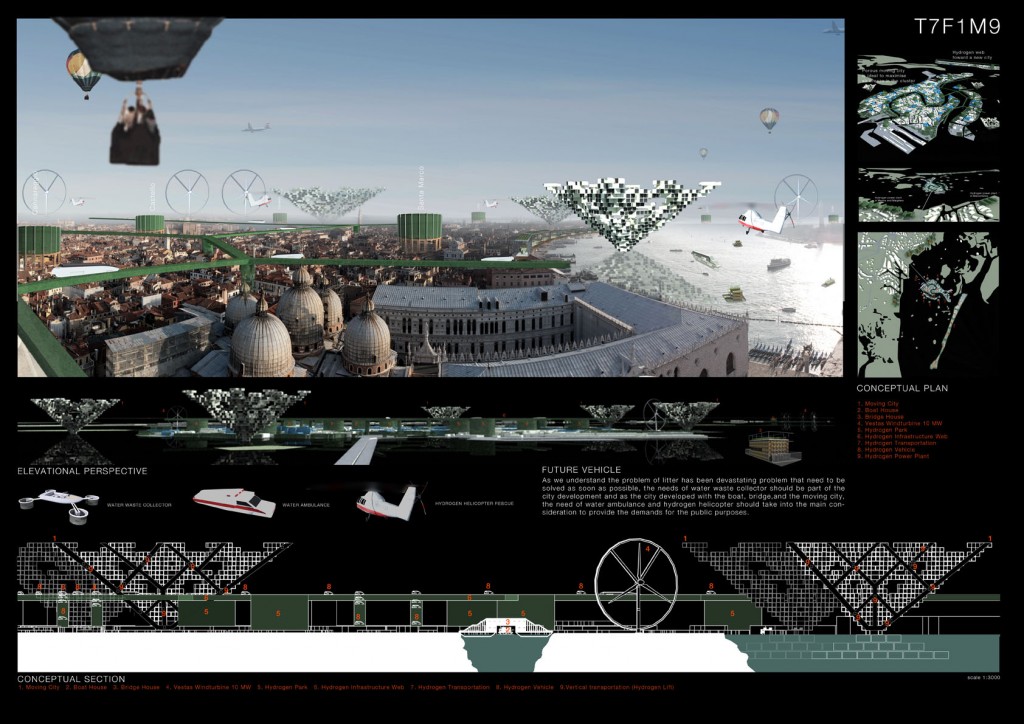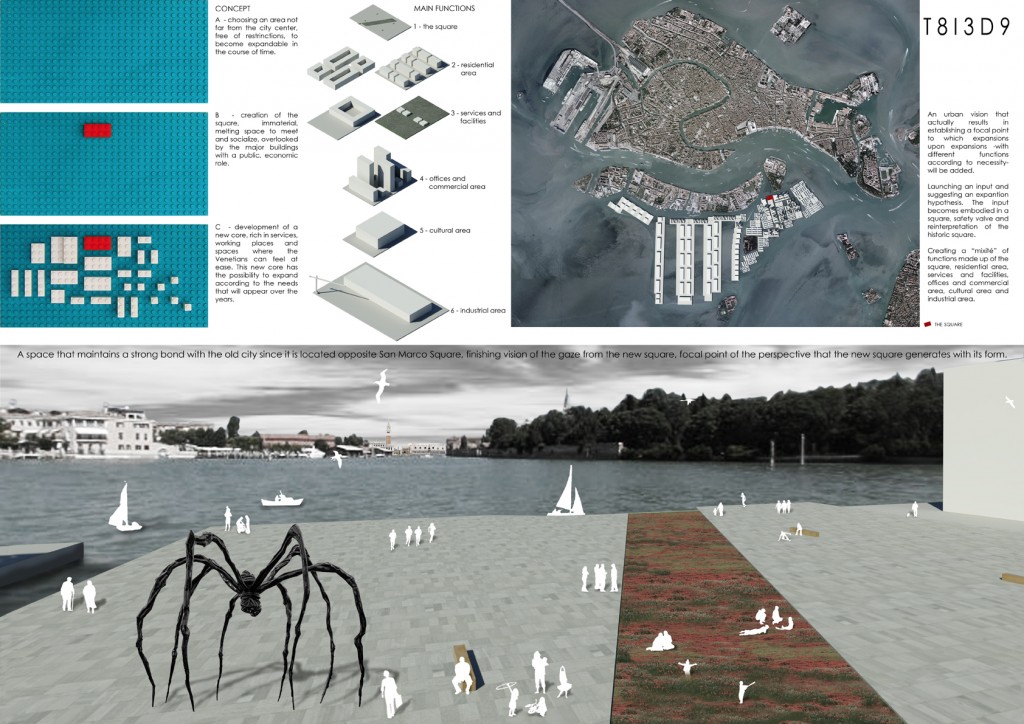Info:
Title: VENICE - Code: T8I3D9Contest: Venice / 2011
By: A. Stanghini / V. Van Der Horst
Views: 3147 Likes: 4
Votes:
BJARKE INGELS5 NERI OXMAN7 ELENA MANFERDINI3 MARIA LUDOVICA TRAMONTIN3 BOSTJAN VUGA44.4
VENICE
Venice: a unique city, since it has developed on an element – water – which is its characterizing and, at the same time, deteriorating factor. The sea has made Venice live its most glorious moments, as an economic, commercial and military power; cradle of culture, architecture and arts, which have given the city its eternal beauty. That same sea is responsible for its periods of decline and for the corrosion that still consumes it.
But, as the Phoenix rises from its own ashes after death, Venice is enduring, able to redeem itself and to be ” …. the flattering and suspect beauty—this city, half fairy tale and half tourist trap, in whose insalubrious air the arts once rankly and voluptuously blossomed, where composers have been inspired to lulling tones of somniferous eroticism.” (Thomas Mann)
As such, crowds of travellers daily gain possession of its spaces. The inhabitants are looted of their places; they are no longer the masters of a town, special, but too complex to live in and whose ties are too strict.
The original project that brought to the creation of Venice was visionary, since a whole city, built on water, standing on a submerged forest of logs, had never been conceived before.
Our plan proposes following this visionary concept and it consequently aims at the creation of new areas on the water, seen as an element which is characterizing, vast and able to receive the new “places of living”.
The project doesn’t affect the old town since its buildings, which stand out because of their historical relevance, have given origin to an urban core complete and at the same time exasperated by bonds of every genre and nature that no new intervention could undo.
The concept consists in producing an urban vision that actually results in establishing a focal point to which expansions – with different functions according to necessity – upon expansions will be added, avoiding to bind Venice to a new master plan.
The structure of the new settlement reflects that of the entire lagoon: land reclaimed from water, depending only, as far as quantity and characteristics are concerned, on the 2needs of the inhabitants who are looking for spaces for their daily, serene life in the “Serenissima”.
The purpose is to create a “mixité” of functions made up of the square, residential areas, services and facilities, offices and commercial areas, cultural areas and industrial areas in a site located in the lagoon where the only constrains are represented by the courses of small boats, which have, on the other hand, been considered.
Due to the peculiarity of its development, Venice has produced a complex system of transport by sea. Mainly in the historic centre, where every movement of people or things takes place by boat, special means, devised to comply with the demand, are used. Therefore we think that carriageable links with the main land, the old city and the other isles of the lagoon are not essential.
The project intends to give a solution to the inhabitants’ identity crisis, by providing them with an environment which can be modified with time. Therefore it launches an input and suggests an expansion hypothesis. The input becomes embodied in a square, immaterial space created to melt, bind and connect; safety valve and reinterpretation of the historic square around which the main social and aggregation activities are placed; a new architectural symbol that reflects the physical, existing needs.
The aim is to create an area, outside the tourist route, enjoyable by the inhabitants of Venice who want to escape the museum-city to land on a space of their own, where to live. A space that maintains a strong bond with the old city since it is located opposite San Marco Square, finishing vision of the gaze from the new square, focal point of the perspective that the new square generates with its form.
The new expansion we advance for Venice wants to establish a dialogue between the present, historical city and its future image, in the belief that it is not possible to preserve without daring and innovating.
Info:
Title: VENICE
Time: 6 giugno 2011
Category: Venice
Views: 3147 Likes: 4
Tags: Adriatic Sea , Doge's Palace Venice , History , Piazza San Marco , San Marco Square , Scripps Institution of Oceanography , Stanghini , Thomas Mann , V. van der Horst , Venice









